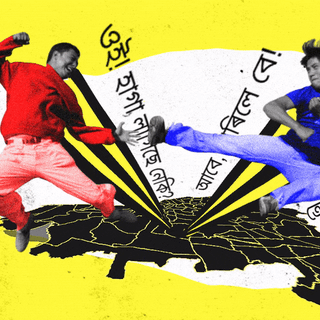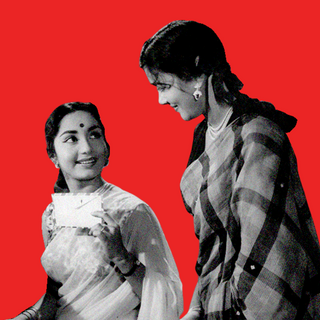
In Conversation: On the Leaked Videos of Female Students
The team discusses pressing events that say something about our culture, and why it matters. Today, the murky intersection of digital privacy and gender-based harassment.

The team discusses pressing events that say something about our culture, and why it matters. Today, we talk about what makes digital privacy and security a feminist issue.
A female student at Chandigarh University is reported to have recorded videos of more than 60 women in the hostel while they were bathing — without consent — and shared them with a male friend. It has sparked protests within the campus and beyond, with the police arresting the student for violating Sections 354C (voyeurism) and 66(E) of the Information Technology Act. The university has shut down until Saturday to curtail protests and is sending students back home.
The facts of the case are still unclear, with objections being raised about who circulated the video, sent it to whom, and if the videos of multiple women were indeed recorded. Meanwhile, the response to the incident is telling of the lack of institutional support available to women in the digital space. This absence determines how we understand digital security, online gender-based harassment, and violations of consent.
AS: I am thinking about Men’s Rights Activists (MRAs) and how they are using this incident to indulge in whataboutery, to ask “why the feminists are silent on this” or to highlight how “feminism” is responsible for what happened. To them, it evidently doesn’t matter that the videos were allegedly sold to men. Nor do they care that the videos were, in fact, uploaded onto websites that are known to normalize and fetishize voyeurism, non-consensual sex, and other acts of violence — largely cater to the male gaze and male fantasies. Arguably, the incident highlights how MRAs have little understanding of how social power structures work, how willfully ignorant they are of patriarchy, and how one woman’s act – carried out in the interests of the patriarchal society – is enough for them to unleash their misogynist vitriol.
RN: The overlooked aspect of this issue is the salacious undertones in the media reporting around it. Richa Kaul Padte, in the book Cyber Sexy, discusses at length the illicit, titillating connotations behind the term “MMS.” It was first popularized in the infamous “DPS MMS” case, where a clip containing sexual activity between two students of Delhi Public School, R.K. Puram circulated online and caused national mayhem. “Bollywood rode a wave that made the word ‘MMS’ itself synonymous with an illicit, racy pleasure… It gave ‘caught on camera’ a new meaning in a new digital India, and that meaning was here to stay,” Padte wrote. But “… the purveyors of morality ignored what the DPS MMS case was actually about: a devastating violation of consent,” she continues.
It’s these connotations that remain troubling today — more so since the overwhelming narrative is that of an “MMS scandal.” Amid rising tensions and protests, there remains very little that we definitely know about what happened: police authorities say that no “objectionable” videos were found, even as scores of women protested through the night.
Meanwhile, H.S. Bains, Punjab’s for School Education, tweeted that the incident “relates to dignity of our sisters [and] daughters.” In no aspect of the incident are the questions of digital privacy, gender-based harassment, or consent ever discussed; the women whose videos were allegedly leaked remain “daughters and sisters” rather than citizens whose rights were violated. Moreover, mainstream media coverage of the issue remains as sensationalist as it was nearly two decades ago. The idea of there existing videos of unsuspecting women is dangled in front of consumers of the news like tantalizing bait; simultaneously driving up engagement with the purveyors rather than the conversation itself.
What we lose in the process is the ability to take stock of our digital security infrastructure, of treating privacy as a fundamental right, and of who, overwhelmingly, is caught in the crossfire. Without due consideration, when digital landscapes expand, fundamental rights — especially those of some people more than others — shrink. This leads to a situation where we’re woefully ill-equipped to deal with the reality of non-consensual, sexualized videos of women circulating unfettered in cyberspace. The manner of reporting only draws attention to the scene of the crime, rather than to the crime itself.
DR: Rather than empathizing with the rightful anger one is burning with, we have a tendency to tell them, “Calm down!” A counterproductive combination of words, it doesn’t serve to allay one’s angst; instead, often, it invalidates their lived experiences and their perfectly reasonable responses to them. That’s precisely what’s happening with the criticism of the student protestors, too. After all, the accused being arrested doesn’t mean justice has been delivered.
Moreover, it may have been the protest that drew the matter as much attention as it appears to have garnered. Without that, perhaps, this, too, would’ve become another assault on women’s privacy that is forgotten by the time a news cycle is refreshed. In the absence of the protest, are we sure prompt arrests would have been made? Can we know for sure celebrities would have taken to social media, asking people to delete the impugned videos if they do happen to receive them, rather than watch or re-forward them? So far, the critics haven’t been able to prove beyond any doubt that the wheels of justice would’ve been turning as they are without being fueled by the wrath of the students.
Could it, however, result in an unfortunate trial by media that vilifies people without due investigation? The possibility can’t be dismissed entirely, but the fact remains that it is social media itself that is pushing people to consider different aspects of the matter.
Evidently, conversations on the bane of modern technology often take the backseat when the overwhelming sentiment is to either focus on its boons. And the once-in-a-blue-moon discussions that do come close to addressing the former are often hijacked by the kind of misogyny that seeks to curb women’s freedom in the digital age, rather than upholding it. A women-led protest, then — as long as it’s peaceful, of course — might help spotlight the issue without necessarily stripping the agency of the affected parties and turning them into silent spectators to events unfolding in their own lives. However, the critics of the protest are turning it into another instance of women being told to “calm down” while a society that has often failed them, takes control of the situation.
Related


Woe Is Me! “I Want to Date My Coworker. Is This a Terrible Idea?”
